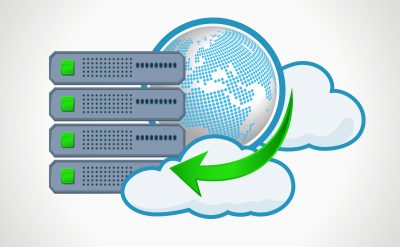A cloudlet is a mobility-enhanced small-scale cloud data center located at the edge of the Internet. Cloudlet is being developed to support the resource-intensive applications and interactive mobile applications that have constraints on performance and the speed of command/decision exchange. It’s a new kind of architecture that’s been used to support applications that require cloud computing power but cannot be implemented in the current cloud architecture. Currently, with mobility and application requirement, there has been the emergence of the three-tier model.
Cloudlet can be considered as a small-scale data center located at the network edge. Using virtualization the cloud computing services can be provided for wearable, mobile and IoT devices. The main purpose of the cloudlet is to deliver the performance of cloud geographically closer to the device this implicates the need for WAN for the application. The proximity of the computing power helps to reduce the quiescence of interactive applications, improving the end-user experience for the applications.
Using cloudlets, the enterprises can maximize the interaction between the application and devices. The real-time interaction can support applications that are divided into the backend server program and frontend client program. The frontend client program loads the backend server for speeding up the functionality of the applications, in cases such as Speech recognition, Virtual reality, language processing, and even Machine learning model applications.
The guidelines for both cloud data centers and cloudlets overlap. Currently the need of
1. Strong isolation between the untrusted user-level computations.
2. Access control for authentication.
3. Dynamic resource allocations according to the application requirement.
4. Providing the ability of unregulated computations and minimum restrictions.
The requirement of greater bandwidth and reducing the latency can be fulfilled by cloudlet but what will be actually difference enterprises might face while dealing with cloudlet. Although the above requirements show us that both the cloud data centers and cloudlets from the same model for applications but they differ in many technical ways. If the enterprise adds one of the cloud services, it’s the responsibility of the vendor to monitor the health of service. With cloudlets, the enterprises need to implement and manage their own infrastructure. A public cloud serves a number of users compared to the cloudlet. The public cloud service is accessed using the internet or WANs. However, in the cloudlet there tend to be fewer users. Cloudlet connects using the private wireless network and is generally not limited to soft-state data. Cloudlet limits the access to the different local wireless network and although cloudlets have lesser number of users compared to the private cloud. The private cloud serves the users at places they reside through WANs or the internet using any form of the device to connect.
However, Cloudlet is just specific to mobility combined with IoT devices and is combined with a geographical location closer to the device. Thus, the applications that access the cloudlet don’t usually experience the lagging effect. Cloudlet infrastructure differs from the virtual private clouds (VPC) as the same they differ from the private cloud. Cloudlet gives the user complete control over the infrastructure in terms of implementation, management, and security.
Cloudlet and Virtualization:
Though both cloud and cloudlet have many characteristic differences they have a combined path that serves the virtualization in delivering the functionalities. Cloudlet uses the virtualization to better utilize the resources, isolate the workload, and manage the operation. It helps cloudlet deliver services like security and deliver the scalable model for the applications.
Cloudlet as a Solution
Cloudlet has been the topic of discussion for over the years but the implementation and availability are still lacking. The open edge computing is a combined effort by Carnegie Mellon University and large tech firms to drive the standards for edge computing. The initiative to standardize and define the platforms that support the Cloudlet. For example, openstack++ project an extension of OpenStack to support the cloudlets. The OpenStack++ will support the Virtual Machine(VM) handoff, the discovery of Cloudlet and time delivering. Though cloudlet is far from the actual application, increased use of IoT devices along with wearable technology means the need for cloudlet is imperative for virtualization.
For more information, you can download our Whitepapers.














